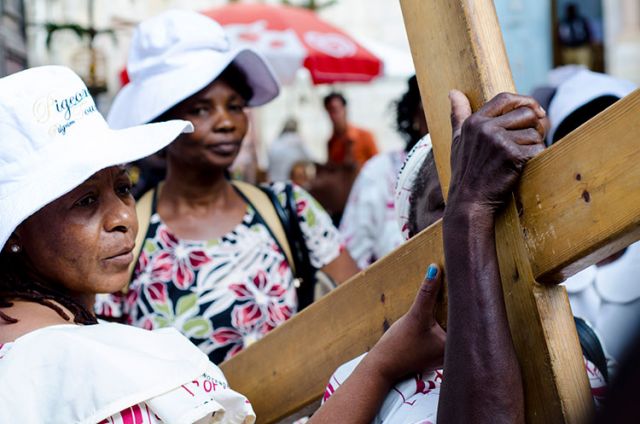“I wanted to come here because I love Jesus and I am Catholic,” said Michal Brlace. “Being here has helped deepen and enrich my Catholic faith.”
Brlace, 13, was found waiting in line inside the Church of the Holy Sepulchre with his parents at the final station, the stone under the Greek Orthodox Altar of Sorrows where the crucified Christ was placed. They travelled from Poland to Israel as part of a pilgrimage to the Via Dolorosa — a Catholic tradition which dates back to the Byzantine era.
Located in the Old City of Jerusalem the current Via Dolorosa, which translates from Latin to mean the way of suffering, is an 18th-century winding route that is believed to follow the path Jesus took while carrying His cross.
Fr. Mitch Pacwa, author of The Holy Land: An Armchair Pilgrimage, suggests taking time to touch the stone before finishing the Via Dolorosa.
“It is a good opportunity to consider Jesus being stripped of His garments, being nailed to the cross ... the raising of His cross, His last words, His last breath and the grief of his Mother standing close by through it all,” he wrote. “While the process of Jesus’ suffering, crucifixion and death seemed in the control of its perpetrators, in fact it was under God’s control.”
But touching the stone isn’t the only way to develop a physical bond with Jesus while making the spiritual journey through the Old City of Jerusalem. For a nominal fee, which varies depending on who was asked but seemed to average about $75, pilgrims can rent a large wooden cross to carry from the Antonia Fortress to the Church of the Holy Sepulchre about 600 metres away.
While travelling this distance pilgrims pass nine stations — the remaining five are inside the Church of Holy Sepulchre. Most of those on the winding route through the Old City are marked with little chapels where pilgrims can stop, pray and, unlike Jesus, take a break from carrying their cross for a moment.
“Every chapel belongs to a different denomination,” said Ben David Tzion, an Israel Ministry of Tourism guide.
“For the Greek Orthodox, Roman Catholics, all of the Eastern churches, the Coptic, Ethiopians, Polish, this is the most important place in the world,”
For example, station nine is a chapel that belongs to the Coptic Orthodox found south of the Monastery of St. Charambalos, a Greek Orthodox monastery which is considered the eighth station.
Despite the changes to the route which have occurred since Jesus’ time — where Blrace waited used to be outdoors and outside of the city walls — the Via Dolorosa continues to attract Christians from around the world annually.
“If you want to understand the Bible come see it here,” said Tzion. “Israel makes the Bible come alive, almost letter by letter.”

